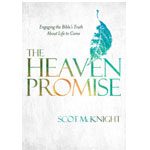 Peter Goodwin Heltzel, Resurrection City: A Theology of Improvisation (Eerdmans, 2012).
Peter Goodwin Heltzel, Resurrection City: A Theology of Improvisation (Eerdmans, 2012).
Review by Wesley Vander Lugt
Resurrection City was a shantytown built on the National Mall in the summer of 1968 after the assassination of Martin Luther King, Jr., serving as a communal expression of the Poor People’s Campaign and their fight against economic injustice. Although Resurrection City was not without its faults, Peter Heltzel uses it as a parable for collective improvisations of hope and shalom justice that witness to the beauty of God’s new creation. This book, the third in the Prophetic Christianity series (see my review of the inaugural volume here) is a call for the church to be community of resurrection, embodying a new social order and performing a just and subversive way of life in the midst of oppressive empires.
If unveiling a resurrection city of shalom justice is the goal, improvisation is the means. There are several reasons why Heltzel chooses to utilize jazz improvisation as a model for enacting shalom justice. First, jazz improvisation is a communal, collaborative process. Improvising shalom is a process involving a similar form of call and response, creating a new song together in community. Second, jazz improvisation is intercultural, representing a blend of musical forms from a myriad of cultural and ethnic backgrounds. Similarly, improvising for shalom justice is an intercultural process seeking racial and ethnic reconciliation and collaboration. Third, jazz improvisation arose out of the underside of history, expressing hope in the midst of suffering. The blues, for example, expressed the pain and suffering of the African American experience while envisioning a new way forward. Likewise, improvising shalom justice seeks solidarity with the oppressed while seeking creative ways to nurture fullness of life in the darkest places. Fourth, jazz improvisation is not a matter of creating noise out of nothing, but creating something new out of old themes and whatever else is at hand. As such, Heltzel recognizes that the main themes for improvising resurrection city are found in Scripture, particularly in the prophets and in Jesus the greatest Prophet, who is also our supreme model for improvising shalom justice.
In many ways, Resurrection City is a model for doing theology today. It is creative, contextual, personal, prophetic, biblical, bold, and beautifully written. Heltzel engages with the arts as a model for theology but does not carry the metaphors too far. He engages with Scripture but also brings it to bear on the contemporary context. He is passionate about holistic transformation and seeks to understand and perform the gospel in every area of life. What a great combination!
I loved many things about this book, but I had a few lingering questions. First, Chapter Six on “The Church as the Theater of the Oppressed” was my favorite, but it was a bit confusing that this chapter used theatrical improvisation as a model and the rest of the book interacted with musical improvisation. Would it have been better to maintain a consistent metaphor throughout? Second, everything in this book pushed toward the challenge to embody justice in the everyday, but there was a surprising paucity of practical suggestions for “normal Christians” who work in 9 to 5 jobs. What does improvising shalom justice mean for the insurance underwriter, the dental hygienist, or the small-town carpenter? Third, Heltzel explains why he focuses on urban existence (cities are places of centralized power, p. 167), but a book like this reminds me that we need more reflection on the unveiling of resurrection city in rural areas and small towns. What does improvising for shalom justice look like for the church in Breezy Point, Minnesota? And finally, while I rejoice that a self-professed evangelical like Heltzel has written a book emphasizing shalom justice, there is a tendency for books like this to underemphasize other evangelical themes such as preaching the gospel, celebrating the sacraments, and telling others about Jesus. Of course, these themes are not mutually exclusive, and thankfully there is plenty of room in Heltzel’s mystical-prophetic vision to include all of these and many more.











